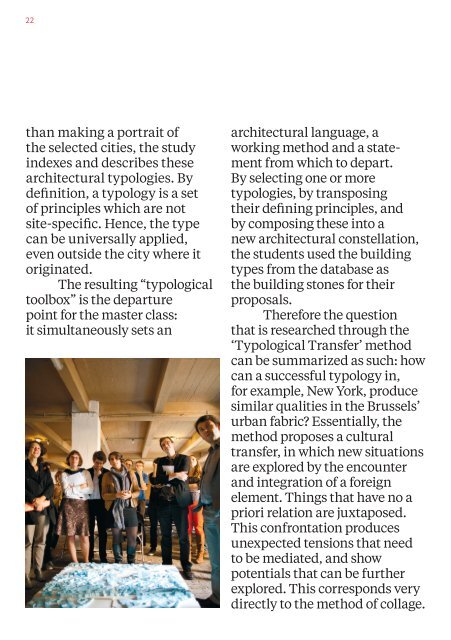Master Class 120% Brussels
You also want an ePaper? Increase the reach of your titles
YUMPU automatically turns print PDFs into web optimized ePapers that Google loves.
22<br />
than making a portrait of<br />
the selected cities, the study<br />
indexes and describes these<br />
architectural typologies. By<br />
definition, a typology is a set<br />
of principles which are not<br />
site-specific. Hence, the type<br />
can be universally applied,<br />
even outside the city where it<br />
originated.<br />
The resulting “typological<br />
toolbox” is the departure<br />
point for the master class:<br />
it simultaneously sets an<br />
architectural language, a<br />
working method and a statement<br />
from which to depart.<br />
By selecting one or more<br />
typologies, by transposing<br />
their defining principles, and<br />
by composing these into a<br />
new architectural constellation,<br />
the students used the building<br />
types from the database as<br />
the building stones for their<br />
proposals.<br />
Therefore the question<br />
that is researched through the<br />
‘Typological Transfer’ method<br />
can be summarized as such: how<br />
can a successful typology in,<br />
for example, New York, produce<br />
similar qualities in the <strong>Brussels</strong>’<br />
urban fabric? Essentially, the<br />
method proposes a cultural<br />
transfer, in which new situations<br />
are explored by the encounter<br />
and integration of a foreign<br />
element. Things that have no a<br />
priori relation are juxtaposed.<br />
This confrontation produces<br />
unexpected tensions that need<br />
to be mediated, and show<br />
potentials that can be further<br />
explored. This corresponds very<br />
directly to the method of collage.


















